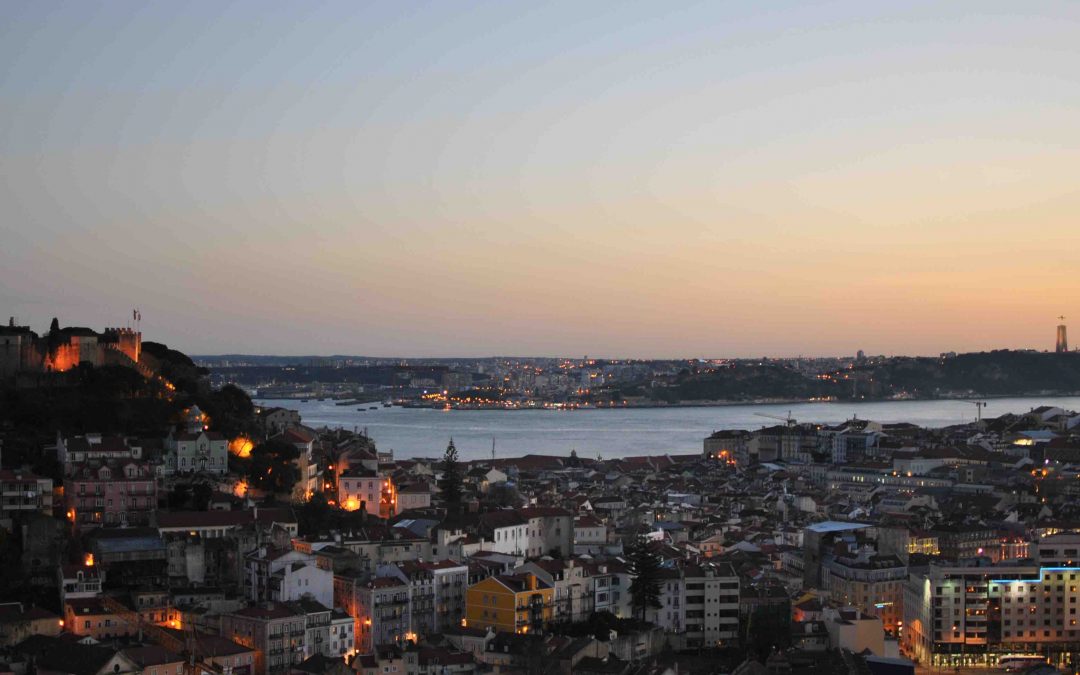I have a tendency here in the blog, to speak mostly of my trips abroad, when Lisbon is the city I know best, not only because whenever I have foreign friends visiting I take them for a walk, just as I have gone for a walk countless times to find the most interesting details to feed my Instagram feed when I’m not traveling. So, and because Lisbon is now a trend, I wanted to leave you the script that I normally do when I take my friends for a walk. Everything on foot, that’s how things should be seen.
Day 1 I start and finish always at Cais do Sodré, since I live in Oeiras and I come by train. Here you can choose to go either through Rua da Alfândega or through Ribeira das Naus to get to Terreiro do Paço. The second option is usually my favorite because it goes along the river and also because one enters Terreiro do Paço facing the statue of D. José and for the arch of Rua Augusta. For some time now, tourists are seen on the “beach” next to the Cais das Colunas. If you do not have a lot of time, I do not say that you shouldn’t go there, but I suggest you take the train at Cais do Sodré to one of the beaches of Estoril, much more beautiful and with the certainty that you will not catch any disease if you go in the water.

Pass under the archway and follow Augusta Street (you can also go up the archway for a quick glimpse from above, costing only € 2.5). This area, known as Baixa, was completely destroyed after the 1755 earthquake and was planned by the Marquis of Pombal, also known as Baixa Pombalina. This man developed an anti-seismic structure, all the buildings being built on wood stakes below ground level, since it is an area where a stream once passed, the ground floor rests on stone columns while the upper floors have the famous pombaline cage, this one also in wood. In this area you can find many clothing stores, souvenirs and restaurants. They also have the MUDE – Museum of Design and Fashion, whose entry is free – check on the website if it is open because at the time I am writing this post is undergoing requalification works. In any case, even if you are not so interested in the subject, it is very interesting to enter the building, former headquarters of the Banco Nacional Ultramarino.

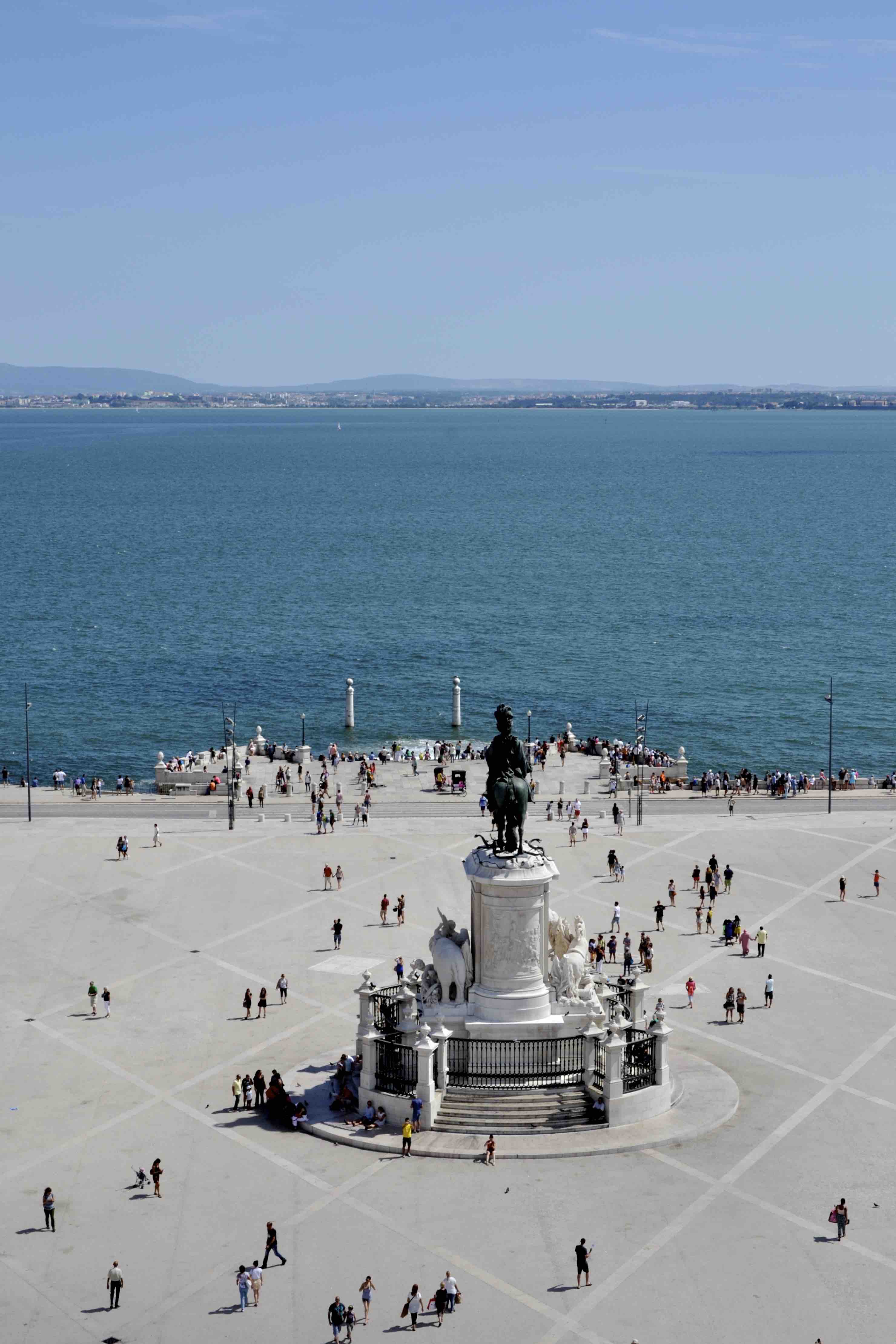
On one of the perpendicular streets, on Rua de Santa Justa, immediately before reaching D. Pedro IV Square (known as Rossio), you will see on the left the Elevador de Santa Justa. You can take some photos and continue walking, because we’ll come back to it later. In Rossio you can find some of the most emblematic pastries / cafés in Lisbon such asSuíça and Nicola. Since last year we have found a very creative store that is O Mundo Fantástico da Sardinha Portuguesa, a circus-like shop that only sells canned sardines but with a very creative presentation and an ideal gift to take home . Still in Rossio you have to pass by the train station in Manueline style, although it was constructed well after the time of D. Manuel. On the opposite side of the Theater D. Maria II there is the Church of St. Domingos, with an impressive interior, after having burned in the 50’s. Right next to it you can find the famous A Ginjinha, for those who appreciate liquors, before heading to Casa do Alentejo , already in Rua das Portas de Santo Antão, for me one of the best secrets of Lisbon! Leaving this magnificent cultural house of arab influence go straight through Rua do Jardim do Regedor to Praça dos Restauradores, at the beginning of Avenida da Liberdade, reserved for luxury shops and theaters. On the left, for those who are facing the Avenue and after the Foz Palace find the Calçada da Glória, with the elevator with the same name. These elevators, which are very similar to trams, with the difference of only having two stops, one at the base of the hill and another at the top, were originally designed as a means of public transportation to help the residents to climb the hills. Nowadays they are super touristic and the greatest proof is in the price that is paid on board: € 3.60. What most tourists do not know is that if they have money in the “Cartão Viva” (Zapping fare) it costs only € 1.30. You can also walk on foot as it is only 270 meters. At the top you will find the belvedere of São Pedro de Alcântara, with a fabulous view of the castle hill. Descend a little to the Church of São Roque, the most beautiful of Lisbon and then descend the steps of Calçada do Duque, very photogenic! If you go down Rua da Condessa, the second on the right, you will arrive at Largo do Carmo, where the Carnation Revolution ended on April 25, 1974, because there was the Barracks. In the same square you find the Ruins of Carmo Church, partially destroyed during the earthquake of 1755, precisely on November 1, All Saints Day, soon full of believers inside it, who died buried under the fall of the cover. Nowadays it houses the Museum of Archeology, but what is really interesting is the building! On the right side of the ruins there is a little street that leads to the Elevador de Santa Justa (up the stairs and past the Italian restaurant). This is for me the biggest tourist trap in town, not because it’s not worth it, but because tourists stand in line for hours to go up, when in 5min walk you go around the hill and are up there. And nowadays is even worse as Topo Chiado Bar has installed an elevator in one of the stores in Rua do Carmo that takes us halfway and then we just have to go up a few stairs to the bottom of the stairs that lead to the restaurant. And if in fact you want to have the experience of taking the elevator, then go down, as there is no queue for that! And again take your Viva Card, that this is just like any Carris transportation!


Taking down the lift or going down on foot (again by the restaurant stairs and then immediately to the left) the next area to explore is Chiado. Long known for being the artists’ area of the city, it is also a shopping area with beautiful buildings! Go up Rua do Carmo and Rua Garrett. If you are looking for typical Portuguese products or a creative gift, go through Anchieta Street to the A Vida Portuguesa store. Being there you can stroll to Largo de São Carlos, and return to Rua Garrett where you can see Fernando Pessoa having coffee in A Brasileira – well, his statue. You will arrive at Largo Camões and there you can’t avoid eating a Pastel de Nata in Manteigaria, for me the best Pastéis de Nata (custard tarts) of the city! From there you have to enter Bairro Alto, for me a lot more beautiful during the day – as, for those who do not know, Bairro Alto is one of the nightlife zones of Lisbon, with bars in each door. Go up a bit and enjoy the streets without cars to take some nice photos! Go down again, through another street, to see different things, and follow the Calçada do Combro to see Ascensor da Bica, at Rua da Bica de Duarte Belo, considered one of the most beautiful streets in the world.
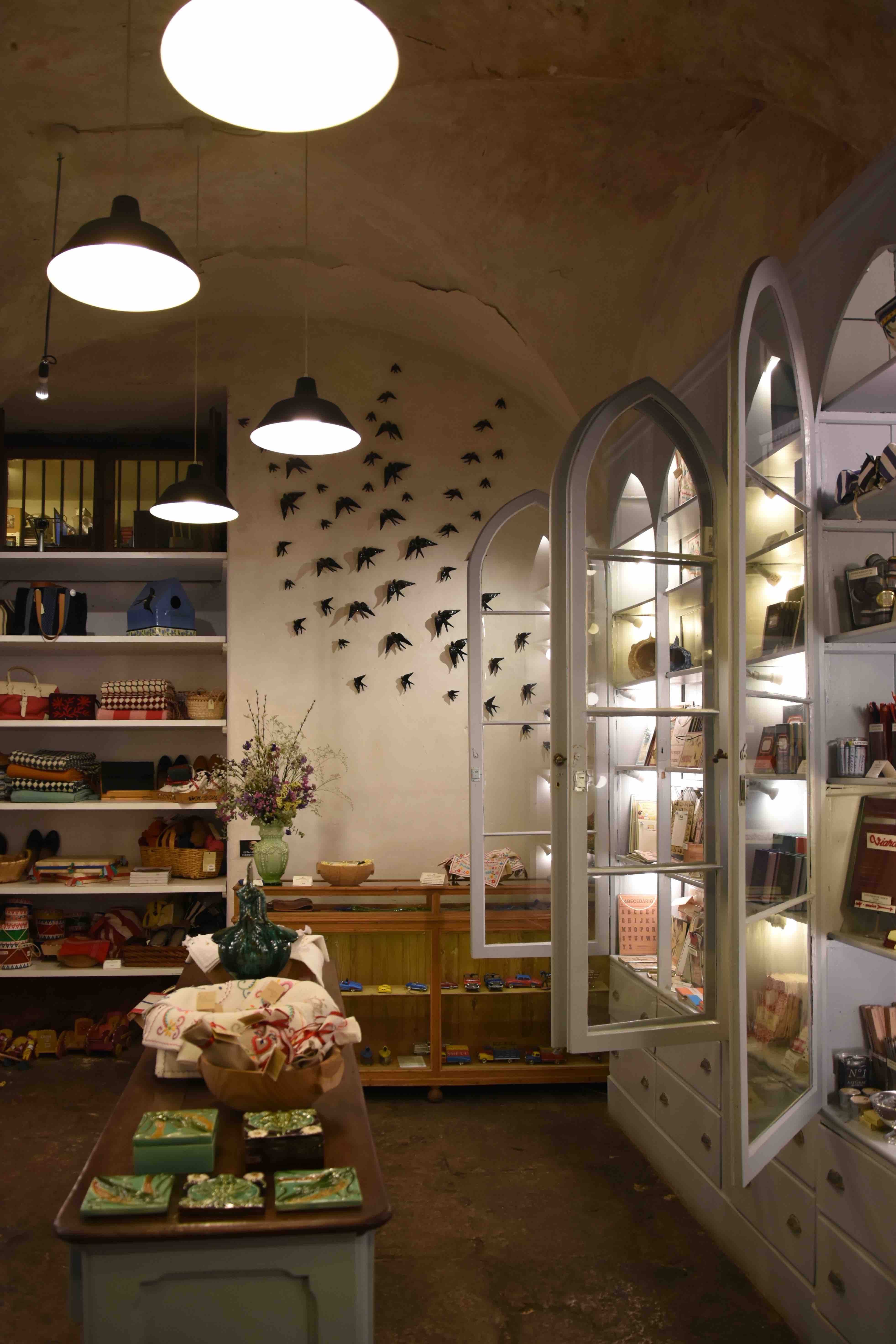
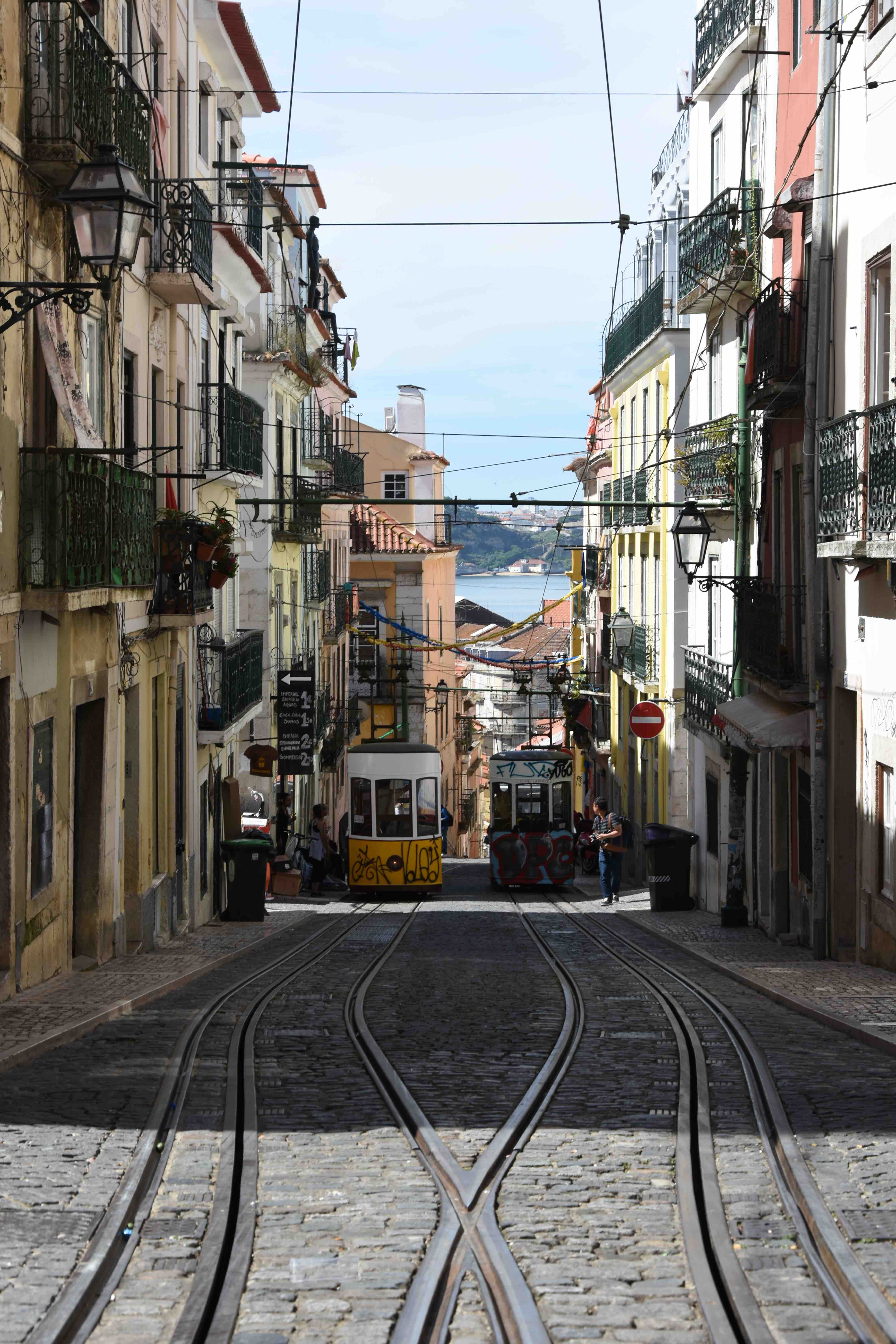
To end the day beautifully you have two options, both with stunning views but both usually very full. The first is PARK, a bar at the top of a parking lot on Calçada do Combro, with great music and Sommersby (which I love!). Or take Marechal Saldanha Street to the Miradouro de Santa Catarina, which often has live music and there is always room on the floor. All you have to do is to get back down to Cais do Sodré, where the day started, and take the train or the metro back home. Total: ~ 6km on foot
Day 2 After resting our legs we have a day dedicated to the old quarters of Lisbon, those who survived the earthquake. We begin with Mouraria, which, as the name suggests, is where the Moors lived, before the reconquest by D. Afonso Henriques. The nearest and most accessible place to start is by Praça da Figueira (Rossio metro) or by the underground Baixa-Chiado. At Rua dos Fanqueiros, next to Pollux, climb the staircase that leads to Rua da Madalena and at the top of the stairs cross the street and continue up the arch that you find before you until you reach Largo de São Cristóvão. Pass the Beco das Farinhas, where you can find an exhibition of photographs of the residents of the neighborhood and a little of their history. Continue along Rua de São Lourenço when you reach the end go down the stairs towards Martim Moniz, the most intercultural zone of Lisbon, where many Chinese, Pakistani, Indian and African PALOP people live. Continue along Rua da Mouraria and Rua do Capelão until you reach the picturesque Largo da Severa, named after a famous local fado singer. Here gain strength because we will go up to the Miradouro da Graça, only 550m away but with a difference of altitudes of approximately 60 meters – synonymous of many stairs. This is for me one of the best views of the city as you can see the castle, the river and the bridge, besides having a beer garden with acceptable prices. For the bravest, you can go up to Mirador do Senhora do Monte, passing Villa Sousa, still in Largo da Graça, or Vila Berta, my favorite, old working-class villages of the industrial revolution era.


It is now time to go down to the Church of São Vicente de Fora by Rua da Voz do Operário. Behind the Church in Campo de Santa Clara, on Tuesdays and Saturdays you will find the most famous fair in Lisbon, Feira da Ladra, where you can find everything. Next to it is the National Pantheon, with its imposing dome. Admission costs € 4, you decide whether to enter or not. The next step is to get lost in Alfama. Alfama is the oldest district of the city, on the hill between the Castle and the Tagus. And what I really like is to walk aimlessly, because in every corner there are small houses, narrow streets and beautiful details! Try to reach Largo do Chafariz de Dentro, past the Chafariz d’el Rei (or Chafariz de Fora – that is, inside and outside the old wall) and start climbing towards Largo do Portas do Sol, another place with views to the city and the river! Here, the Church of São Vicente de Fora and the National Pantheon stand out on the horizon. At our feet Alfama and next to the river the new cruise terminal designed by the architect Carrilho da Graça.

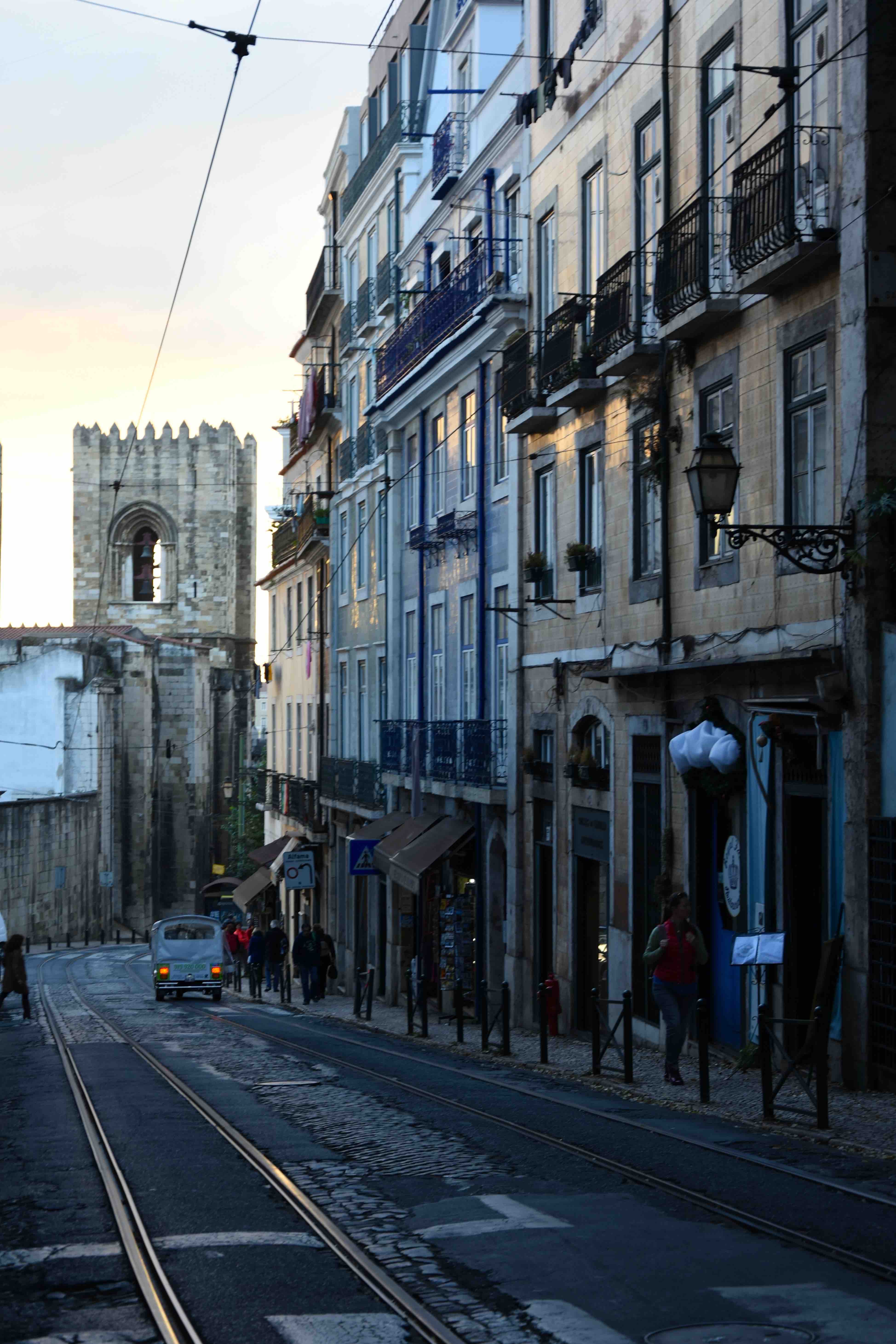
Then you can decide whether to go to St. George’s Castle or not. I have never been there since it began to be paid, € 8.5 costs the entry. But I’m really sorry because it was one of my favorite places and the best view of downtown. From the Castle or from the Portas do Sol, we only have to go down to Largo da Sé, where you can visit the main church of Lisbon – but do not have high expectations, as it is a typical medieval church, without any decorations. And from there we return to Baixa and finish our second day in Lisbon. Total: ~7km on foot
If you like Lisbon as much as I do, do not forget to follow my instagram, where I put photos every day 90% of them from Lisbon!

